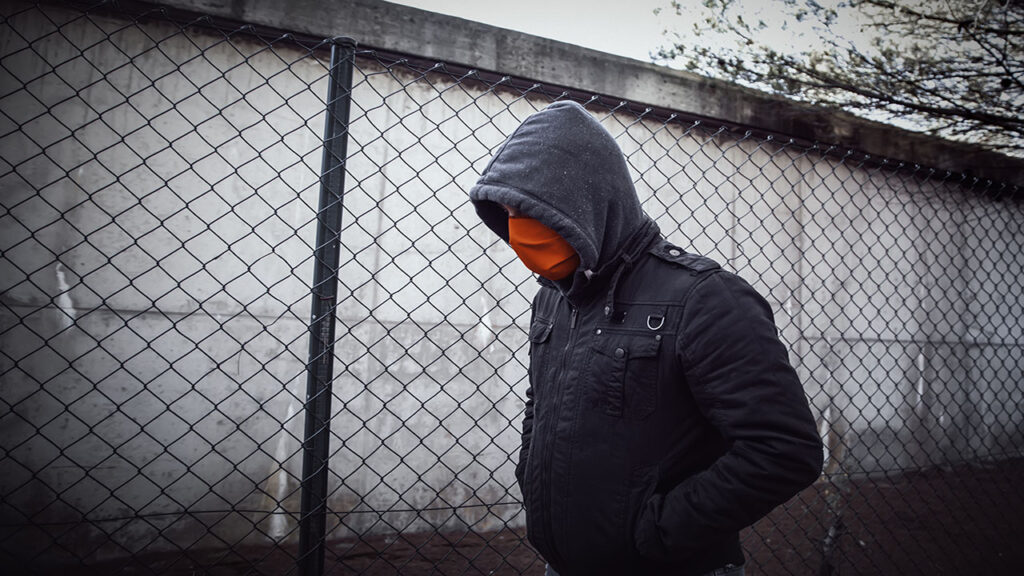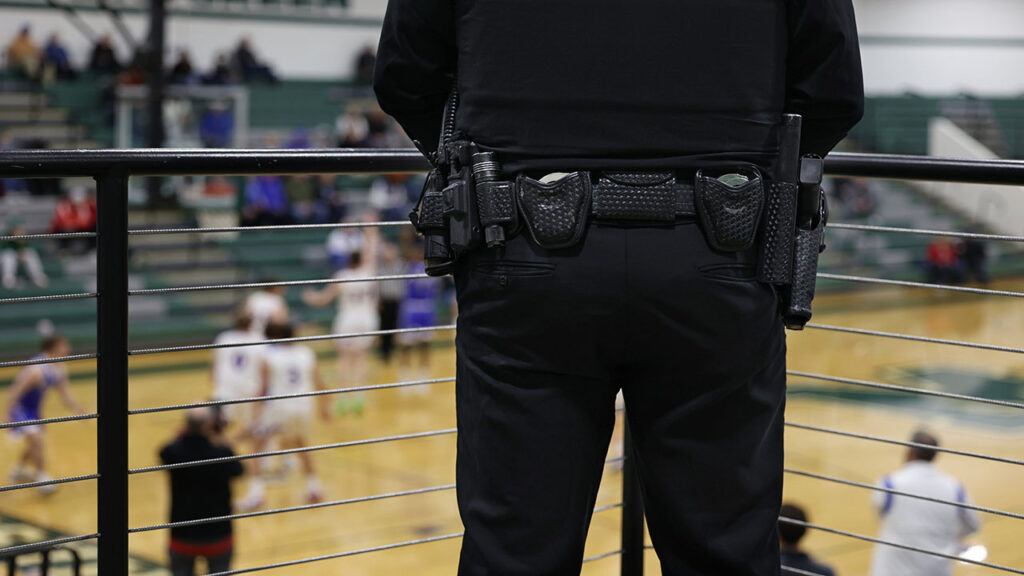
Schools Skip Simple Ways to Build Trust in School Police, Research Finds
Even as more schools hire law enforcement, many skip simple steps to share information about the deputies and school resource officers stationed in their hallways—like making available basic information about the officers and their roles available on their websites, recent research finds.
The oversight misses an opportunity to inform the public about the officers and, potentially, help build trust and inform debates about equity and school safety, said Chris Curran, an associate professor of educational research and policy at the University of Florida.
“As we’ve had national conversations around the presence of law enforcement in schools over the past couple years, there is increasingly a need for transparency around their presence and the roles that they’re designated to play in order to inform those conversations,” said Curran, who studies the outcomes of school safety and discipline policies.
His urging comes as more schools consider adding police following mass shootings at a Uvalde, Texas, elementary school in May 2022 and at a Nashville private school in March 2023. Following those attacks, Texas lawmakers passed a law requiring a licensed law enforcement officer on every school campus, and Tennessee lawmakers approved $140 million in funding for districts to hire officers for every school site.
The new laws echo a similar measure passed by Florida lawmakers less than a month after the 2018 shooting at Marjory Stoneman Douglas High School in Parkland, Fla. That law includes a requirement for all schools to have an armed adult—either a law enforcement officer or a trained, screened staff member—on site.
Information on school police sparse on school websites
To assess schools’ transparency about police, Curran and a co-author analyzed the websites of a randomly selected sample of 300 Florida public schools in the fall of 2020. They searched for information about school resource officers, their names, their contact information, and descriptions of their roles.
The researchers then compared that information to data about school police they’d collected through a public records request the previous year to estimate how many schools with police on-site hadn’t posted information about them on their websites.
What they found: The portion of schools with information about SROs on their websites—about one in five—was less than a third of what they expected compared to their statewide data, which suggested between 60 and 75 percent of schools had sworn officers on site.
The schools that mentioned SROs most commonly listed them in staff directories, the researchers wrote in a study published online in last September in the journal Educational Policy. “In contrast, virtually no schools provided further information on their websites regarding the roles, practices, or job descriptions of the SROs,” the authors wrote.
Why transparency matters
About 51 percent of public schools nationwide had sworn law enforcement on site during the 2019-20 school year, according to the most recent federal data. While police have been common in secondary schools for years, the percentage of elementary schools with on-site officers is growing: 41 percent reported officers in 2019-20, compared to 31 percent in 2015-16.
Schools, including those in Florida, report the presence of law enforcement to state and federal agencies, but that data can be less accessible to parents and general members of the public who are interested in their work, Curran said.
Whether or not officers’ names are listed on websites is just one indicator of transparency, he said. Officers may also be introduced at parent nights and in newsletters, or they may interact with families in the pick-up line after school.
And, because some officers are employed through agreements with outside law enforcement agencies, failure to list their names alongside those of principals and math teachers is likely an oversight for many schools, Curran said.
Ideally, proponents of school resource officers envision them as an extension of community policing—a model that relies on building relationships to prevent and deter crime. Such a model makes it imperative that families—and community members who may not have children in schools—can attach a face and a name to the officers in school hallways, he said.
A shifting debate
Mo Canady, the executive director of the National Association of School Resource Officers, said the organization agrees that including an SRO’s photo, name, and contact information on a school’s website and in staff directories “would facilitate the development of positive relationships with students and their parents, which is a primary goal of SROs according to NASRO’s published best practices.”
Ideally, schools also would provide easy access to memorandums of understanding, the formal agreements between schools and law enforcement agencies that detail officers roles in schools, Canady said. Those agreements often specify that administrators, not officers, are in charge of handling routine discipline matters.
Civil rights groups argue against police in schools, citing research that links their presence to higher rates of arrests and suspensions, particularly for Black students.
Many districts examined their agreements with school police in 2020, during a national push for reform following the police killings of George Floyd, a Black man in Minneapolis, and Breonna Taylor, a young Black woman in Louisville, Ky.
Between May 2020 and June 2022, at least 50 school districts ended their school policing programs or cut their budgets, according to an EdWeek tracker.
At least nine of those districts have since reversed course, bringing officers back to their campuses. Most recently, Denver schools moved to bring back school resource officers in March 2023 after a 17-year-old boy shot two administrators during a routine weapons search.
As those debates continue, it’s even more important for community members to know who is patrolling their schools’ hallways and what their role is with students, Curran said.
“Anytime we’re changing policies that themselves may have unintended negative consequences, I think transparency is an important piece of ensuring that the community is part of that conversation,” he said.
Dig Deeper With Our Longreads
Newsletter Sign up to get our best longform features, investigations, and thought-provoking essays, in your inbox every Sunday.
The MEN was founded by John Huber in the fall of 2020. It was founded to provide a platform for expert opinion and commentary on current issues that directly or indirectly affect education. All opinions are valued and accepted providing they are expressed in a professional manner. The Maryland Education Network consists of Blogs, Videos, and other interaction among the K-12 community.










